ITMO.NEWS learned all about the cutting-edge breakthroughs in this field at a lecture (in Russian) by Vitaly Egorov, a space science communicator, founder of the Open Space project, and author of the book Делай космос! (Russian for “Do Space!” – Ed.). Here are the takeaways from the lecture.
Structure of the Solar System
We know now that the Solar System is made up of eight planets and five dwarf planets – Pluto, Eris, Haumea, Makemake, and Ceres. The latter had been classified as an asteroid for a long time before the General Assembly of the 26th International Astronomical Union identified it as a planet due to its spherical shape. Actually, it was that same year that Pluto lost its full-scale planet status. The difference between a dwarf planet and an asteroid is in the spherical shape while the two types of planets can be differentiated by the presence of other space bodies in their orbits.
At the same time, planets are only a small part of the Solar System, its core. And it is not with planets that it ends: beyond the orbit of Neptune, the farthest of them all, located about 55 astronomical units away from the Sun, lies the Kuiper belt. Even though it looks like a belt of asteroids, it consists of bodies that are more like comets. Moreover, it is about 20 times wider and 200 times more massive. Pluto is the largest known object of the Kuiper belt.
But even the Kuiper belt is not all there is – next comes the scattered disc, a region sparsely populated with small bodies mostly made up of ice. The scattered disc partly overlaps with the Kuiper belt but the disc’s outer edge is farther away from the Sun with some objects reaching a distance of 100 astronomical units.
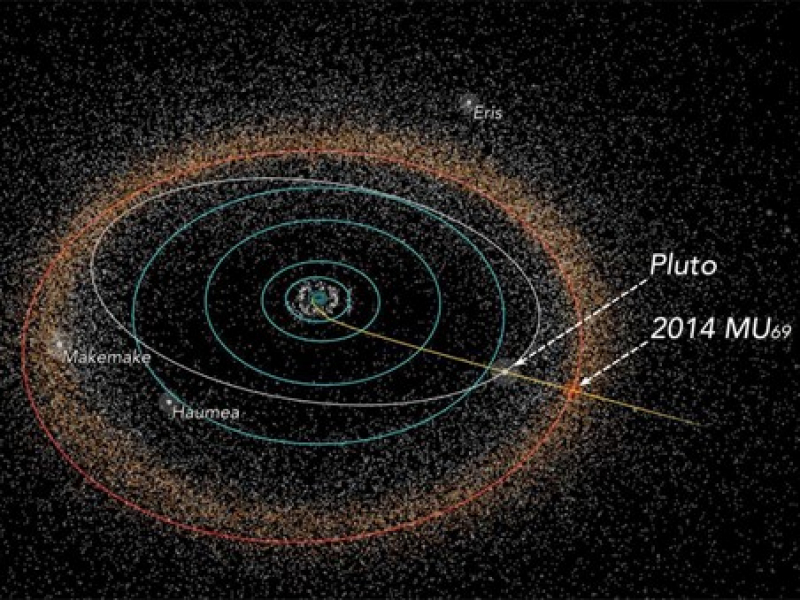
Even farther away there is the hypothetical Oort cloud. It has not been spotted yet but it is supposed that all comets come from there. Comets have very different orbits: some, like Halley’s comet have the orbit time of 75-76 years, while others, such as Encke's Comet rotate in three years and Comet Hale–Bopp takes 2,500 years to complete its circle. All of this points to the fact that the source of these objects is far away from the Sun and the Earth: the supposed distance to the outer edges of the Oort cloud is between 50-100,000 years and it would take a lightyear to reach it.
One other object worth mentioning is the heliopause. It looks like a bubble of gas and heated plasma, which forms the environment around the core of the Solar System – after that there is only the interstellar medium. It was there that two spacecrafts, Voyager 1 and Voyager 2, were sent in 1977. They have both already crossed the border of heliopause, but you shouldn’t believe the media that say the Voyagers have left the Solar System. It will take them tens of thousands of years to reach the Oort cloud. The latest update from Voyager 2 was received in 2018, and you can track Voyager 1 on its way in real time on NASA’s page.
Scientists debate on what the heliopause looks like: it is often depicted as an elongated bubble (because the Sun orbits the core of the Galaxy), but it is only a hypothesis. We can’t see the way our System looks from the outside but we can visualize the view based on pictures of other stars made by the Hubble telescope.
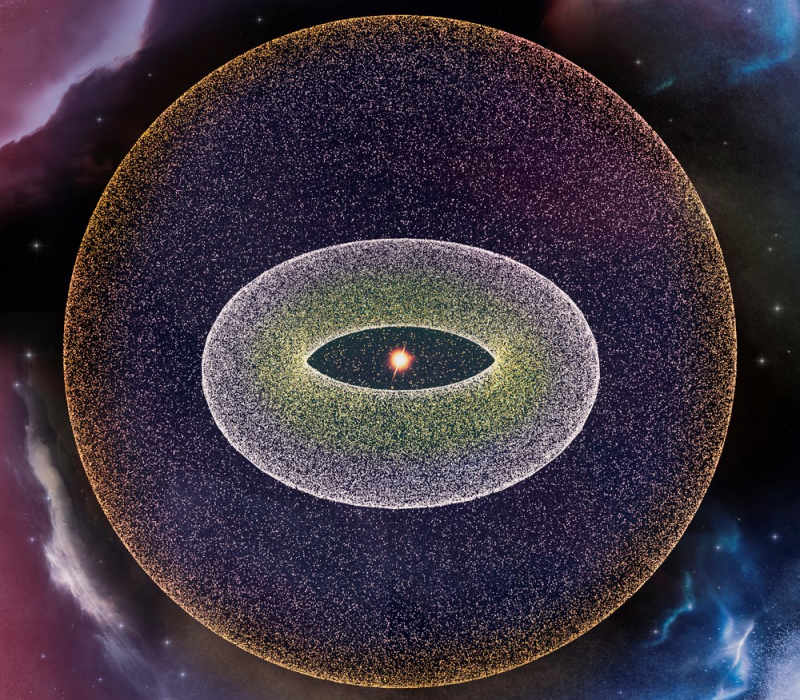
New info about planets
Mercury is one of the most unexplored planets, apart from Uranus and Neptune. This is due to the fact that it is very difficult to reach: it seems close, but there are certain ballistic problems that make it difficult to approach and enter the planet's atmosphere.
And yet, two spacecraft flew to Mercury, and the last, MESSENGER, made a detailed mapping of it in 2011. Externally, the planet looks like the Moon. The surface is made interesting by Caloris Planitia, one of the largest craters in the Solar System, with a diameter of 1,550 kilometers (a third of the diameter of the entire planet). The most peculiar discovery was the presence of water on Mercury in the form of ice, which is quite strange, given the planet's proximity to the Sun.
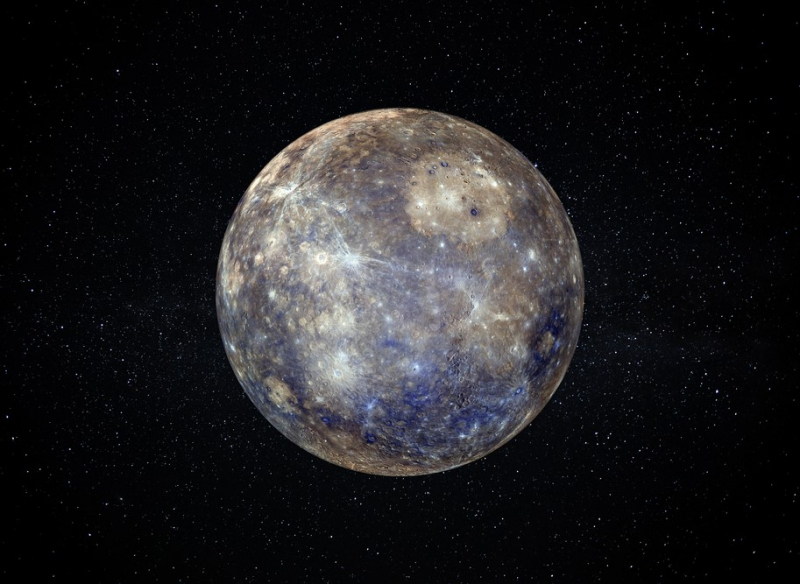
Venus used to get a lot of attention, especially in Soviet space exploration. This is really quite an interesting object, for example, because of its atmosphere – it is 95 times denser than that on Earth. Due to the fact that Venus rotates very slowly around its axis, the atmosphere warmed by the Sun is in a state of super-rotation, that is, it rotates around the planet several times. Because of this, eternal one-sided powerful winds blow on Venus.
Because of the density of clouds, the surface of the planet can only be observed with radars – this is how the Magellan spacecraft mapped Venus in 1990-1992. Spacecrafts continue to be sent to Venus quite often, the European Venus Express spacecraft conducted a thermal survey of the planet's surface in 2006-2015 and discovered many active volcanoes. They intensively replenish the atmosphere of Venus, which it loses due to its proximity to the Sun. Some scientists even compare Venus to a comet, because of the bright tail of the evaporating atmosphere that it leaves behind.
During the same expedition, Venus snow was discovered: it is bismuth sulfide and lead sulfide, which are released from volcanic gas, then settle on top of volcanoes, and condense under the influence of lower temperatures.
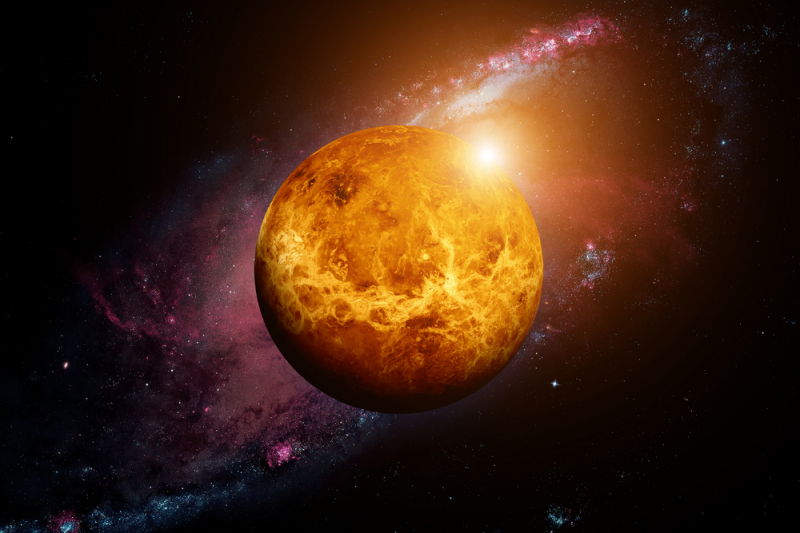
In general, this is a fairly frequent phenomenon when familiar things like rivers, lakes, and snow are repeated on other planets with seemingly uncommon substances. This way we have found sulfide snow on Venus, methane rivers on Titan, soda cryovolcanoes on Ceres, or dust ponds on some asteroids.
The latest discoveries at the most studied space object concern the presence of large deposits of water ice at the poles of the Moon. It was found by the Russian neutron detector LEND in 2008-2009. The most recent news in this field is the first landing of a lunar rover on the far side of the Moon by Chinese scientists in 2019. In general, China is very interested in studying our satellite: in the near future, researchers from the country are planning to send an expedition to extract soil from the depths of lunar volcanoes and deliver it to Earth. The attention of the other participants of the "lunar race" – Russia, India, and the United States, is focused on the Moon’s poles and the water stored there.
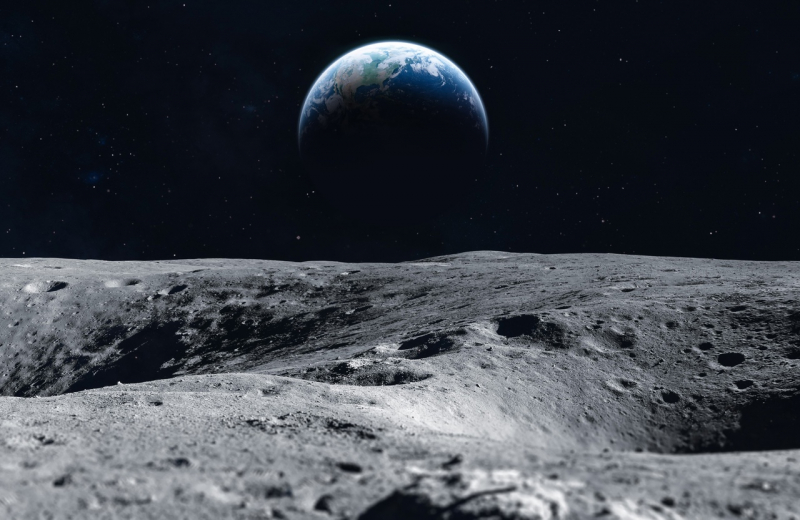
Mars is still often called the red planet, but the ground there is not much different from that on Earth. Actually, Martian landscapes can be observed on Earth, too. The sky on Mars is also not red at all, but blue – due to the effect of refraction of the rays of the setting Sun in the rarefied atmosphere of the planet. One of the most important recent discoveries was that of ice. Moreover, there are different kinds of it on the planet's poles: carbon dioxide-based, which increases over the winter and melts by spring, and water-based, which forms an ice cap and retains its state and shape. The thickness of water ice reaches 3.5 kilometers at the south pole and over 1.5 kilometers at the north pole. If you melt them, then the whole surface of Mars will be flooded with water at the level of 20 meters. However, there is water not only at the poles, but also in the middle latitudes – this is the result of snowfalls that occurred several tens of millions of years ago.
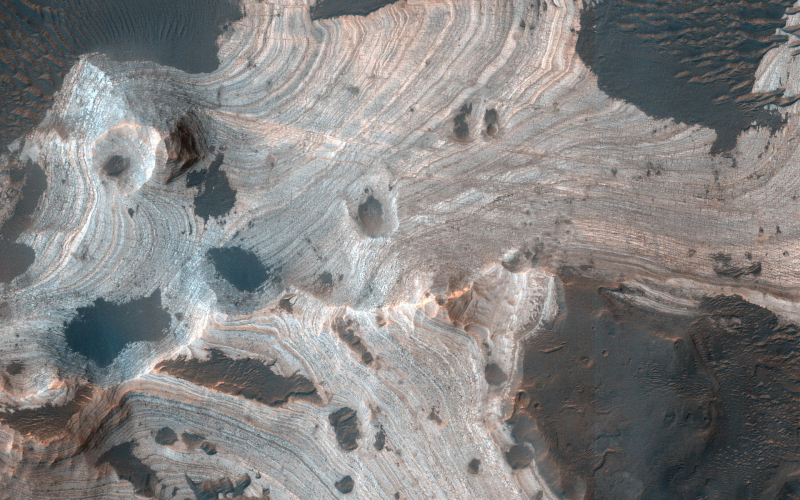
Asteroids in the Main Belt are actually discovered almost daily, literally in batches-this is thanks to robots that automatically process images from telescopes and satellites and catalog the objects they find. Almost all large asteroids, with a diameter of ten kilometers, have already been discovered. Asteroids larger than one kilometer are studied at 95%. All of them are monitored to track the threat they can pose to Earth.
The Asteroid Belt seems to be rather chaotic, but in fact it has its own structure and classification. Separate clusters of asteroids fly in the orbit of Jupiter, mostly they are located in the Lagrange points of the Jupiter-Sun system. Other planets, including Earth, also have their own clusters of asteroids, called trojans, it is just that Jupiter has the biggest number of such clusters due to its mass.
The location of the Asteroid Belt was previously explained by an almost mythical theory about the explosion of the planet Phaeton, which, of course, is absolutely untenable. After all, the total mass of all asteroids is about 6% of the mass of the Moon, which does not count as a planet in any way.
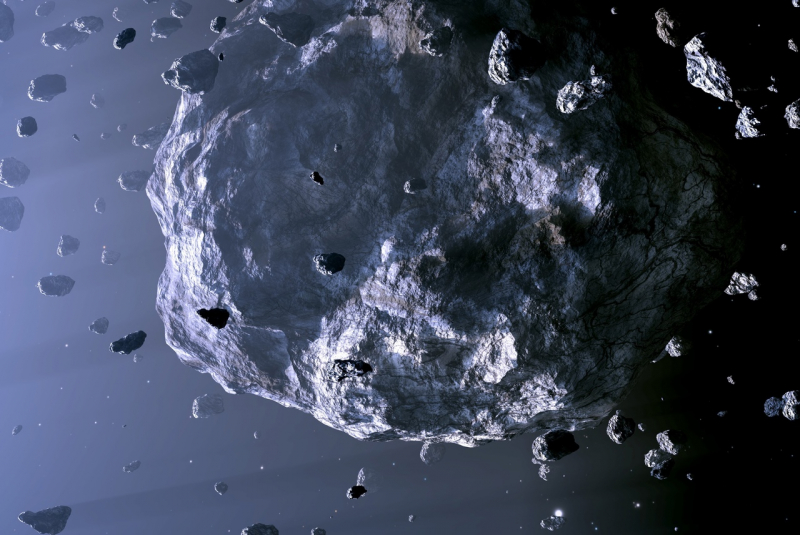
Ceres is the largest object in the Asteroid Belt and the smallest dwarf planet, with a diameter of just under a thousand kilometers. Externally, it is similar to the Moon, but its features are very different from it -- it contains a lot of water and there is such a unique phenomenon as cryovolcanism. Moreover, volcanoes erupt not only water, but also soda, which covers the surface with white spots.
The data from the Dawn spacecraft, which carefully studied Ceres in 2016, indicate that the planet most likely formed not in the place where it is now (between Mars and Jupiter), but millions of kilometers further from the Sun. Its composition and shape are very similar to those of other dwarf planets beyond Neptune.
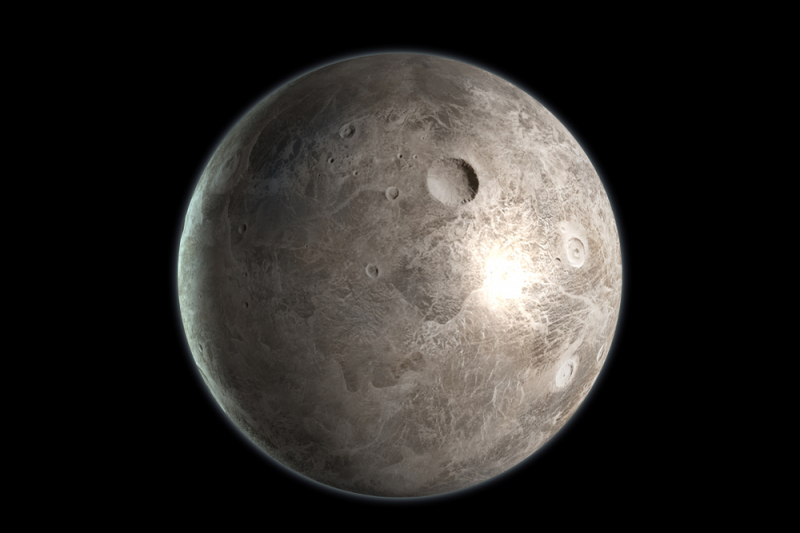
The first high-resolution images of Jupiter and its moons were taken in 1979 by the Voyager spacecraft. Right now, incredibly detailed images of the planet's surface are being taken by the Juno spacecraft. Of course, the attention of all scientists is attracted by the most famous formation on Jupiter — the Great Red Spot. This is the largest atmospheric vortex in the Solar system, however, in the last two hundred years of observations, this spot has been constantly decreasing.
One of the latest observations is the Jupiter polar cyclones, there are a whole lot of them on the planet. Their nature, origin, and amazing stability are not fully explained. Even on Jupiter, auroras are observed: the plant has a very powerful magnetic field, strong radiation belts, and charged particles that fall at the poles of Jupiter into its atmosphere generate a specific glow. These charged particles come from Jupiter's moons, which regularly emit gases to its surface.
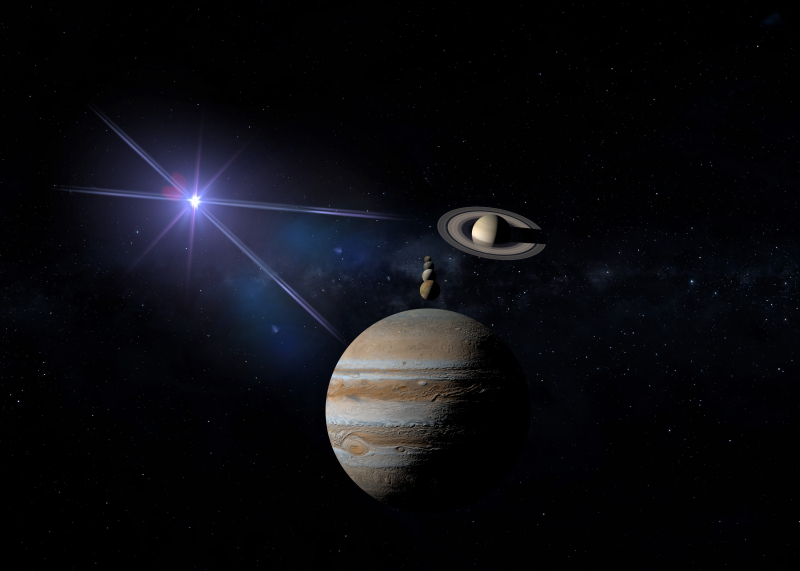
One of the main sources of gas and plasma in Jupiter's atmosphere is Io. This is the most volcanically active object in the Solar System, dozens of volcanic eruptions are always happening there, and the heights of these eruptions can reach 400 kilometers or more – this is due to Io's extremely low gravity. The source of heat in the bowels of Io is a tidal wave: during its rotation around Jupiter, this cosmic body is strongly compressed, then decompressed by the force of attraction, which leads to constant heating.
Jupiter's second moon, Europa, on the other hand, is a giant ball of ice. The thickness of the ice layer is about 20 kilometers, and hidden under this ice is a warm water ocean. Previously, it seemed that it was impossible to get through such a colossal thickness of ice and access the water. However, a recent spectral analysis performed by the Hubble telescope showed that in some places this ice does break, releasing water vapor, which can be collected for further analysis in the laboratory to find out if there is organic matter and signs of living organisms. NASA is already developing a device that will fly over to collect this water.
Saturn is probably the most beautiful object in our system. This gas giant is surrounded by spectacular rings of icy dust and snow, which appeared probably as a result of the destruction of its icy satellite. During the Cassini-Huygens program, many detailed photos of Saturn and its rings were taken to study their structure and behavior. On the planet itself, an amazing object was seen — an absolutely regular hexagon formed by vortices at the planet's pole.
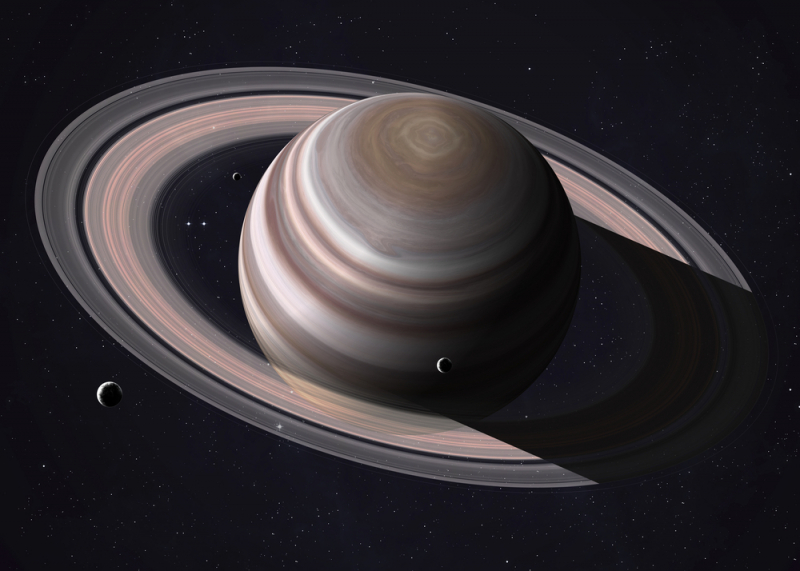
Saturn's largest and most interesting moon is Titan. It has a very dense atmosphere (one and a half times denser than that on Earth) of a rich yellow color. It consists mostly of nitrogen, but this color is created by hydrocarbon. In 2005, the Huygens spacecraft landed on Titan, but because of the very low temperature (-180 C) it could only work for an hour still managing to take many impressive panoramas and samples of the atmosphere, as well as record the sound of the wind.
These images show that the entire surface is dotted with rivers and lakes. It does rain a lot on Titan, but it's not water, it's liquid methane, a substance we've come to think of as a gas. Water can also be found in abundance on Titan, but there it forms the land, as it is in huge ice blocks. All this is due to the extremely low temperatures and the increased pressure of the atmosphere, compared to that on Earth.
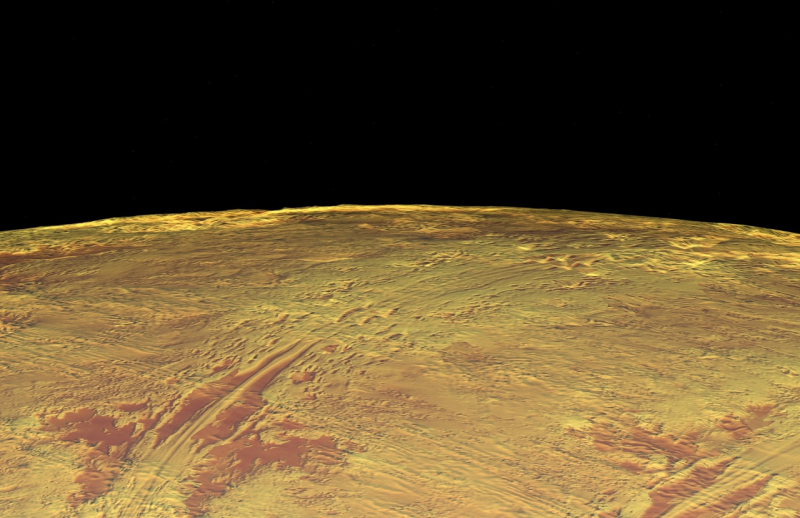
Uranus and Neptune are twin planets that have not been explored in the last thirty years, since the Voyagers flew past them. The reasons why no one sends spacecraft there are somewhat psychological and partly political. The fact is that there is an unspoken rule of space research: when scientists launch a spacecraft, they hope to conduct the associated research during their lifetime. To organize an expedition to such distant planets is not only a difficult task, but also an extremely long one. In addition, there are more interesting objects closer to Earth - and such projects are funded more actively.
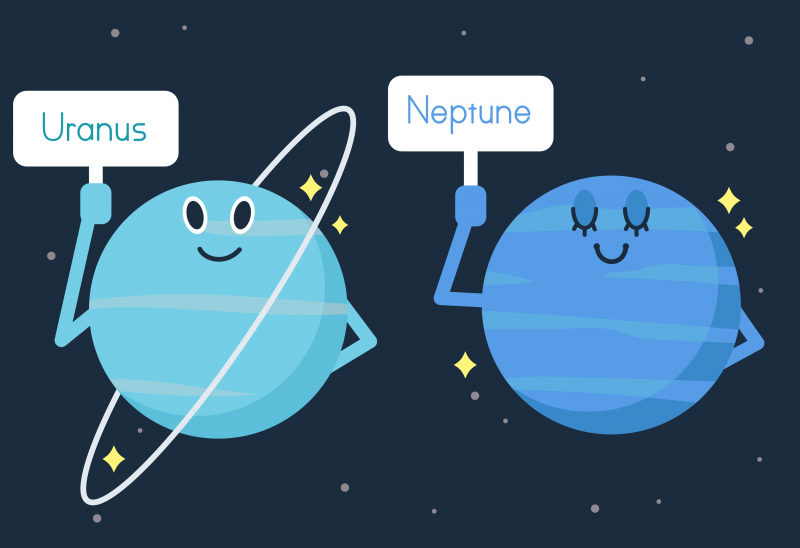
The question is, why then did they launch the spacecraft to Pluto? It is also a purely political story: Pluto is the only planet discovered by Americans (young scientist Clyde Tombaugh in 1930). They consider it their own, so exploring it was important for their national pride.
The automatic interplanetary space probe New Horizons was launched in 2006 to study both Pluto and other objects of the Kuiper Belt. The probe reached Pluto only in 2015, and it spent only 24 hours near the planet. In total, the observation of the planet and its satellites was conducted in nine days. During this time, very detailed images were taken, a detailed cartography of Pluto and its moon Charon was compiled, their geology and morphology were studied, and Pluto's atmosphere was analyzed. It turned out that Pluto is half rock, half ice, which comes in three types: water, methane, and nitrogen.
This mission is ongoing. On January 1, 2019 New Horizons visited 486958 Arrokoth, an asteroid also known as Ultima Thule. It truly is the most distant space object to have been explored by a spacecraft.
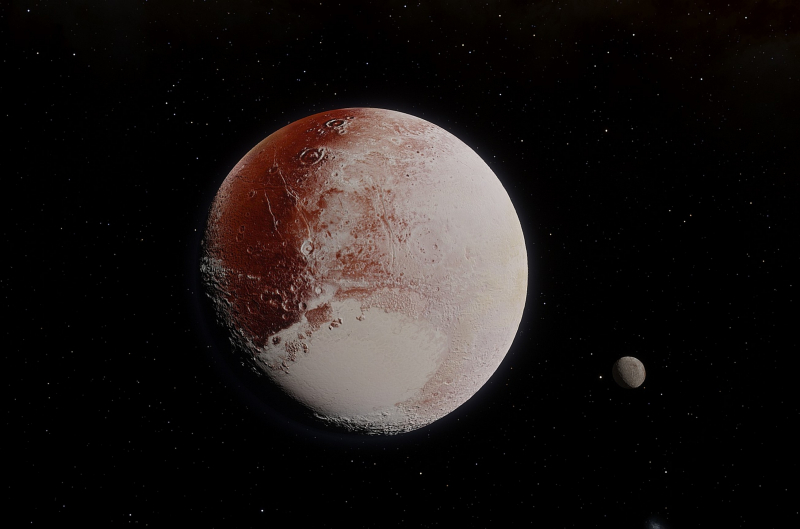
The Planet Nine hypothesis
Currently, researchers actively discuss the probability of discovering a new planet in the Solar System, Planet X. The fact is that the study of objects in the Kuiper belt and the scattered disk showed that they do not move randomly, as they should (because they are at a sufficient distance from Neptune to not depend on its attraction), but around a certain orbit.
A number of scientists have suggested that all these objects are affected by the attraction of a yet undiscovered planet, with a mass about 10 times larger than Earth and three and a half times its radius. The hypothesis is developed by Russian-born American scientist Konstantin Batygin and Michael Brown. They suggest that Planet Nine is the core of a nascent gas giant that was ejected from its original orbit by Jupiter during the formation of the Solar System. The Hubble telescope is engaged in a direct search for the planet, but so far it has had no success.





